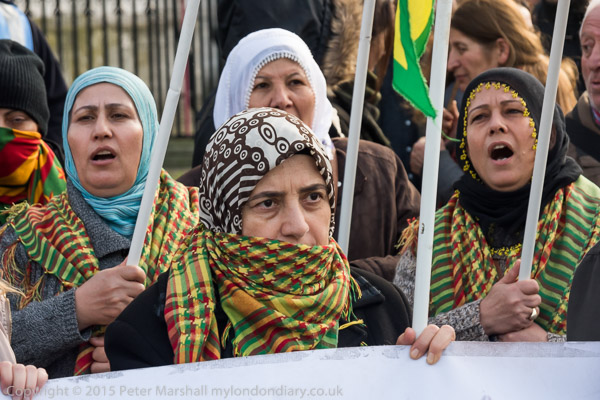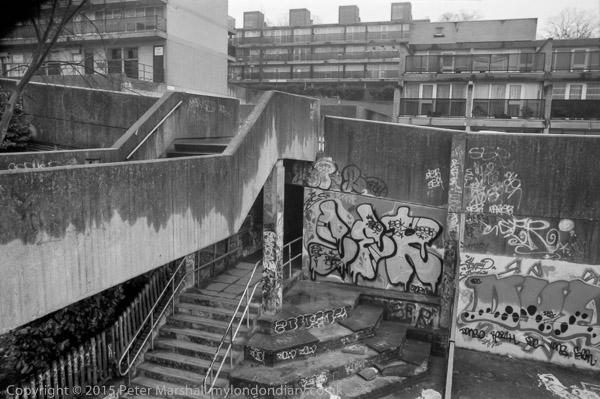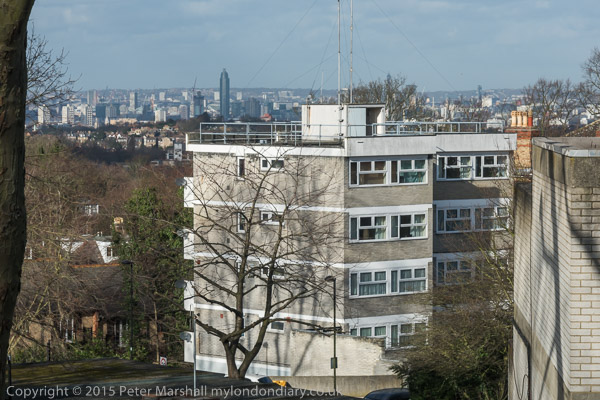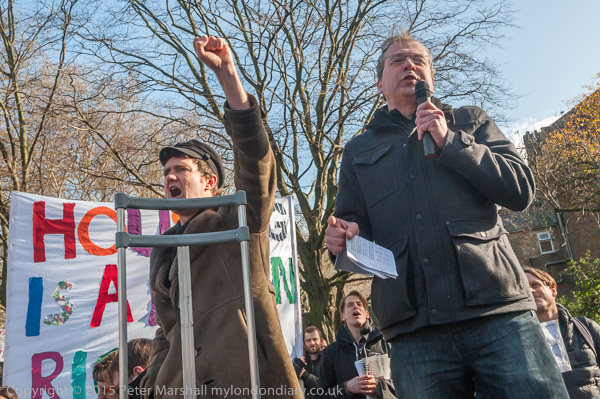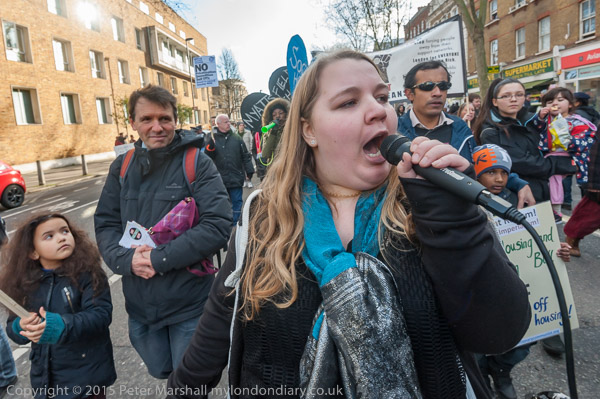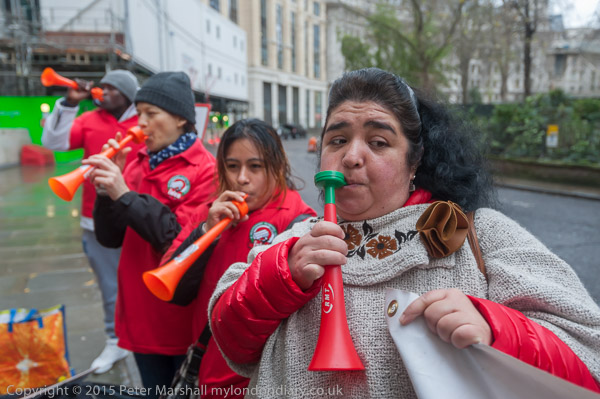Saturday January 16th was one of those days when a lot of things were happening in London. The main event for me was the action at St Pancras over the people held at the camp on our Calais border that I’ve already written about, but when that finished I had several other things to attend to. I knew that I’d missed the start of the march from Cavendish Square to the Japanese Embassy against the Taiji dolphin slaughter, a barbaric practice in which fishermen herd a school of dolphins into a shallow cove and then bludgeon most of them to death, but hoped to find them on the march.

March against Taiji Dolphin Slaughter
I guessed that the march would have started an hour after the published event time and be moving fairly slowly, as they were going to march on the crowded pavements of Oxford St and Regent St rather than go down the road, which perhaps rather lessens the impact, but helps to get cooperation from the police, who have an overriding obsession with maintaining traffic flows.
You don’t actually have to get permission for a march from the police, but to be legal you have to tell them when and where you want to march and they can impose restrictions. In this respect marches differ from static protests, where there is no duty to tell anyone they are going to take place, though increasingly public space in London is becoming privatised – and on this privatised land – which includes Parliament Square and Trafalgar Square – you sometimes seem to need permission to even think differently.
So I took the underground and made a guess they would still be on Regent St. Getting out at Piccadilly Circus I could see no sign of them and decided to walk up Regent St, and several hundred yards later saw some placards in the distance, eventually meeting up with them as they waited to cross Conduit St and walking back with them the way I had come. It was a little tricky taking pictures, walking backwards as they made their way along a pavement which was rather full of tourists and shoppers, and I did bump into a few while getting my pictures.
At Piccadilly Circus I saw that another protest had set up around Eros, and left the Taiji protesters, thinking I might go on to the Japanese Embassy later.

Vegans ‘Awakening Compassion’
I’d not known about the vegan protest by an internet-based group who call themselves ‘Awakening Compassion’. They stood silently in a circle surrounding the base of the statue (which of course we all know isn’t Eros but his bother Anteros, but we still call it that) holding posters showing pictures of farm animals with messages such as “We are animals – We can think and feel – We want to stay alive.”
Obviously these people are sincere and have strong feelings about animals, and I try to respect these as I photograph their protest. But I can’t help feeling that I don’t agree – and that I don’t think the animals in the pictures are actually having those thoughts. I’m entirely opposed to cruelty to animals, and in particular to farm animals but have no problem with being ‘speciesist’. The animals in the pictures are not just farmed animals, but are farm animals, bred over hundreds or thousands of years to produce food for humans, and exist only because their destiny is to be consumed by us. We wouldn’t have any cows at all in this country if they did not supply us with milk and meat; aurochs would simply have become extinct.
For environmental reasons I think we should eat less meat – and I do eat rather less than the average Briton, though I still enjoy the occasional lamb casserole or chicken or fish dish – as well as vegetarian meals, where possible using some of our organic home-grown produce – though most this year has been consumed by squirrels, pigeons, blackbirds and slugs. But while beef production is generally ruinous to the environment, it’s worth remembering that so too is the modern agricultural production of many vegetables.

By now it was time I was in Trafalgar Square, where Syrians and a few friends were calling for the world to Drop Food Not Bombs on Syria, a protest prompted by the siege mounted by the Assad regime and Hezbollah militias on Madaya, where no food has been allowed to enter for more than six months in a deliberate attempt to starve the civilian population and defending forces into submission or death in an international crime that breaches human rights conventions. Similar sieges are also taking place in other cities and towns in Syria, and the situation has been worsened by Russian bombing in support of Assad.
By around 2.30pm I’d finished photographing the Syrians and decided to take a look at the Japanese Embassy, but by the time I arrived there was nothing left to photograph, and I was left in London with around four hours until my next appointment.
I can’t remember exactly how I filled in those 4 hours, though I know I took no photographs. It takes too long for it to be worth my going home and coming back later – and of course would add to my travel costs. Usually I go and check up on the other places where protests frequently occur – particularly Downing St and around Parliament – and sometimes a likely embassy or two. Often I’ll go and visit an exhibition, or visit the National Gallery to look at some of my favourite paintings that they look after for me (and the rest of us.) On a nice day I might go for a walk, or sit somewhere pleasant to read; if the weather isn’t too great, or after the galleries have closed I have been known to go to a pub, though I don’t often do so without friends.

International Times new ‘Issue Zero’
A little after seven o’clock I was on Fleet St, for the launch, or rather re-launch, party of the International Times, the notorious London underground paper first published at the height of psychedelic counter-culture in 1966. Closed down in 1973, it reared up a few times in later years, and its 50th anniversary was marked with a new resurgence, Issue Zero of what is intended to be a continuing magazine.
I’d been invited to come by the new young editor, who had probably guessed I would take a few pictures to put the event on record, and I obliged, as well as helping out in drinking the free wine. I rashly promised to write something for a future issue (and repeated my promise at the launch of issue 1) but haven’t yet got round to it.
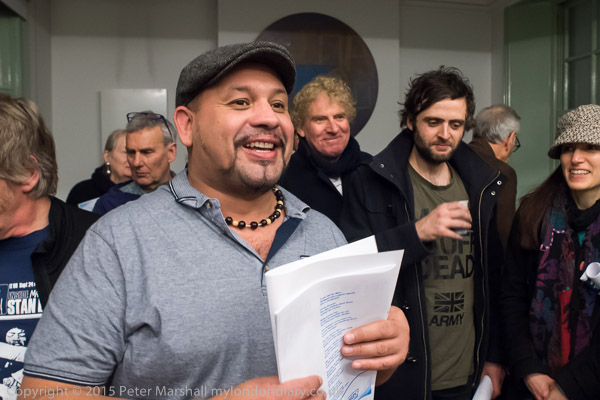
As well as the new team who had worked on Issue Zero, the event included a number of those who contributed to the original magazine, as well as other leading figures from the left underground past and present, many of whom I was introduced to and forgot their names almost as quickly as they will have forgotten mine. There were a few old friends, and one who spoke was Alberto Durango, President of the IWGB union, whose protests to get a living wage for cleaners I’ve often photographed.
The party pictures were all taken on the Nikon D810 using the 20mm f2.8 prime but with the camera set in DX mode. This gives the equivalent of a 30mm lens – close to my favourite focal length, and the visible area outside the frame makes the experience rather like working with a rangefinder camera. It’s relatively fast – with an entry on ‘My Menu’ to switch to FX mode for a wider view when needed, though I didn’t on this occasion do so. At5 f2.8 the lens isn’t superfast, but any wider aperture wouldn’t give sufficient depth of field for most pictures. Working at ISO 2000 typical exposures were around 1/80th f4.5, a fast enough speed to avoid camera shake and motion blur. And at ISO 2000 you have the quality to allow a little cropping if necessary.
The 20mm f2.8 is a relatively compact lens, considerably less aggressive than the bulky 16-35mm f4 which is my standard wide-angle. Combined with the fairly unobtrusive shutter sound of the D810 it has a fairly discreet presence. I didn’t even bother to use the camera’s quiet shutter mode – and in fact I never do. It is initially quieter, but by delaying the mirror return until you take your finger off the release it spreads the sound out over a much longer time, and I find it more obtrusive.
Continue reading Busy Saturday




